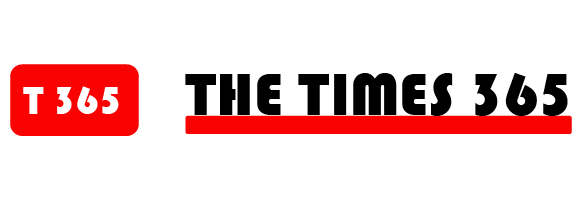As you know, every Wednesday in my Safety Net column, I typically review the dividend safety of a company that’s been requested by Wealthy Retirement readers. Safety Net is the most popular column in Wealthy Retirement, and we’ve been publishing it for nearly 12 years.
Today, in the spirit of “teaching a man to fish,” I’m taking you behind the scenes to show you exactly how I determine the safety of a company’s dividend.
As far as I can remember, I’ve never outlined my full Safety Net criteria before, so I’m eager to share the details with you.
The first thing I look at is free cash flow.
I focus on free cash flow rather than earnings because earnings include all kinds of non-cash items and are easily manipulated.
For example, earnings can include revenue that has been recognized but not received. Let’s say a company books a $1 million sale on December 29. Those funds would count toward the company’s revenue for the year, and that revenue would then trickle down the income statement, with a portion of it being added to earnings.
However, the company sends the invoice on December 30 and, as of December 31, has not been paid.
That $1 million still counts toward the year-end revenue and earnings totals, but it won’t be reflected in free cash flow because the company has not received the money yet.
Another example is stock-based compensation. When a company grants stock to employees, it is counted as an expense that lowers earnings. But no cash went out the door, so it doesn’t affect cash flow.
In short, cash flow is how much cash the company actually brought in (or sent out).
When it comes to evaluating the safety of a company’s dividend, we want to see that the cash the company generated is enough to cover the dividend. That’s because dividends are paid in cash, not in “earnings.”
The best way to determine whether the cash is sufficient to cover the dividend is by calculating the company’s payout ratio, or the percentage of its free cash flow that it pays out in dividends. (Most people use earnings to calculate payout ratio, but I prefer free cash flow for the reasons I explained above.)
We calculate free cash flow by going to a company’s statement of cash flows and subtracting its capital expenditures from its cash flow from operations.
Below is McDonald’s‘ (NYSE: MCD) statement of cash flows from its 2023 annual filing with the SEC.
The key numbers we’re looking at are cash provided by operations, capital expenditures, and common stock dividends.
You can see that cash flow from operations was $9.612 billion and capital expenditures (sometimes known as “capex”) were $2.357 billion. To arrive at our free cash flow figure, we subtract capex from cash flow from operations. McDonald’s’ free cash flow comes out to $7.255 billion.
Then we look at common stock dividends, which totaled $4.533 billion.
This tells us that McDonald’s paid out $4.533 billion out of the $7.255 billion that it generated in cash. That’s a payout ratio of 62%.
If we’d used the $8.469 billion earnings figure (shown in the “net income” row at the top of the page) to determine the payout ratio, the payout ratio would’ve been 54%.
But remember, dividends must be paid in cash, so we’re not interested in what percentage of earnings the company paid out in dividends. We need to know what percentage of its cash was paid out in dividends.
In Safety Net, my payout ratio threshold for most companies is 75%. If the payout ratio is above 75%, I no longer have confidence that the company could afford its dividend if it were to hit a rough patch or its cash flow were to decline. But if the payout ratio is below 75%, the company has a decent buffer to protect it if it has a bad year.
However, there are some exceptions to my 75% rule. I allow real estate investment trusts (REITs), business development companies (BDCs), and partnerships to have payout ratios of up to 100% because they are legally required to pay out 90% of their earnings. For that reason, they usually have higher payout ratios than other companies.
Also, we use a different measure of cash flow for these types of companies. For REITs, we use funds from operations (FFO), for partnerships, we use distributable cash flow (DCF), and for BDCs, we usually use net investment income (NII). For banks and mortgage REITs, we use net interest income.
When I’m determining my Safety Net grades, every stock starts out with an “A” rating and then gets downgraded depending on several factors.
Safety Net looks at both the previous year’s payout ratio and the current year’s expected payout ratio. The stock gets downgraded for each one that’s above 75% (or 100% for REITs, BDCs, and partnerships).
This year, McDonald’s’ payout ratio is forecast to drop from 62% to 53%, which is still well below my threshold.
I also look at cash flow growth. If cash flow has declined over the past year or past three years or is expected to fall in the current year, the stock’s safety rating will be downgraded.
McDonald’s had a big jump in free cash flow in 2023, so its one- and three-year growth rates were positive. Free cash flow is forecast to increase this year as well.
Lastly, we look at the company’s dividend-paying track record over the last 10 years. For each dividend cut in that span, the dividend safety rating gets downgraded by one level. If the company has raised its dividend in each of the last 10 years, it will get a one-level upgrade, because that tells me that management is committed to sustaining the dividend even if the financials get troublesome.
McDonald’s has no dividend cuts in the past 10 years. In fact, it has raised the dividend every year for the past 49 years, so it gets a bonus point.
To sum it up, each stock begins with an “A” rating and a score of 0, but its grade is adjusted based on the following factors:
- Previous year’s payout ratio above 75% (or 100% for REITs, BDCS, and partnerships): -1
- Current year’s expected payout ratio above 75% (or 100% for REITs, BDCS, and partnerships): -1
- Negative cash flow growth over the past year: -1
- Negative cash flow growth over the past three years: -1
- Negative expected cash flow growth over the next year: -1
- Dividend cut within the past 10 years: -1 per cut
- 10 years of consecutive dividend increases: +1.
If the company ends up with a score of 0 or 1, it gets an “A.” If its score is -1, it gets a “B.” A score of -2 earns a “C” grade, a score of -3 gets a “D,” and a score of -4 or below gets an “F.”
McDonald’s’ payout ratio was within my comfort zone last year and should remain there, its free cash flow has been growing and is expected to continue growing this year, and it has no history of dividend cuts in the past 10 years.
With no downgrades, the stock gets an “A” for dividend safety.
Now you know how the Safety Net sausage – or, in this case, Sausage McMuffin – is made. But feel free to continue letting me know what stocks you’d like me to analyze here in Safety Net. Just leave the ticker symbols in the comments section below.
Dividend Safety Rating: A








